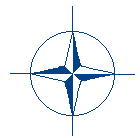
ECOSYSTEM MODELING
AS A MANAGEMENT
TOOL FOR THE BLACK SEA:
A REGIONAL PROGRAM OF MULTI INSTITUTIONAL
COOPERATION
(TU-BLACK SEA)
NATO Science for Stability Program

|
ECOSYSTEM MODELING
AS A MANAGEMENT NATO Science for Stability Program |
|
Among the various SfS activities, the NATO TU-Black Sea project was the first highly significant NATO endeavor to establish scientific collaboration with the central and eastern European countries. The purpose of the NATO TU-BLACK SEA Project was to contribute to the improvement of the health of the Black Sea through utilization of ecosystem models as a management tool, through capacity building, and by fostering an interactive scientific community for the Black Sea.
This multi-institutional activity of five years duration was conducted through the Institute of Marine Science, Middle East Technical University, in Erdemli, Turkey. The project cooperated interactively with the various programs concerned with the Black Sea environment. Linkages were established with The Black Sea Environmental Program of the Global Environmental Facility (UNEP, UNDP, WB), Global Ocean Ecosystem Dynamics Program, EROS 2000 (EU), CoMSBlack program, the Black Sea Regional Committee of the Intergovernmental Oceanographic Commission (UNESCO), and the National Science Foundation (USA). Within the framework of the Project, nearly 100 scientists from a total of 14 prominent oceanographic institutions (9 regional, 5 outside the region) collaborated to accomplish four major activities.
The first activity of the Project was the development of a Data Base and Management System (DBMS) that includes environmental and oceanographic data pertinent to the goals of the Project and that serves as a base line for future research activities and management purposes.
In reference to interdisciplinary data, the DBMS developed through the TU-BLACK SEA Project is a first in Ocean Science. A Data Base Inventory (CDBI) is completed and distributed in hard copy and diskette forms to the Cooperation Partner Institutes and the relevant International Organizations. Data sets delivered by the participants were quality checked and transformed to standardized formats. The attention has been fixed upon the last thirty years of data from all the main regional and international sources. The final version of the data base (ASCII version) includes 12,790 files (149.4 MB). Data for 116 variables from 271 data sets, including 8,364,731 data values for 26,035 stations and is loaded into a CD-ROM. The total volume of data base and information contained in the CD-ROM is 302 Mbytes. A demonstration version of the DBMS has also been created. DBMS will serve as a continuously updated base line for future activities concerned with sustainable use and protection of the Black Sea environment.
The second activity was to assist in the development of appropriate infrastructure and capabilities within the Black Sea countries to carry out the related future research and monitoring activities.
Equipment for high quality, unified data collection and analysis has been provided to the Cooperation Partners Institutions. A satellite image receiving and processing system for common use has been put into operation. A communication network via Internet has also been developed. A substantial number of intercalibration / intercomparison exercises, modeling workshops / courses for cross training in methodology and high quality measurements have been convened. Manuals / reports for chemical methods, criteria for unified biological sampling have been made available to all the participants. Joint intensive / extensive observation through multi-ship surveys have been carried out and the data collected have been intercompared and pooled through collaborative analysis.
The analysis and/or synthesis of the past and recent data through collaborative efforts have already led to a substantial number of joint publications in international journals. This activity has been instrumental in strengthening the foundations for cooperative scientific research in the region and in the rapid development of the DBMS by allowing rapid transfer of voluminous data to the system.
The third activity encompassed the development and application of interdisciplinary ecosystem models of the dynamics of the lower trophic levels of the biological community as affected by physical processes, changes in anthropogenic forcing and natural variability.
The modeling activities in this project constituted research at the frontiers of ocean science. The models adopted were interdisciplinary, eddy resolving, primitive equation models that are based on up to date concepts and methodology. They were developed and applied for the Black Sea through collaborative research among the NATO and Cooperation Partner countries.
Various biological and chemical interactions and cycles, including the microbial loop and those biochemical processes taking place within the suboxic zone, are modeled. The effects of the predator mnemiopsis leidyi on the dynamics of the lower trophic levels have been modeled successfully. The model predictions are in harmony with the observations.
The fourth activity was to ensure that products of the Project would be able to be used and assimilated by the managers, decision-makers and other regional programs. In particular;
The utilization by the user community of the simpler versions developed is expected to take place within one to two year after the project is finalized.
The major scientific publications base on the Project related research encompass 28 refereed journal papers and 83 peer reviewed papers. The cover page of the final Project Report is here.